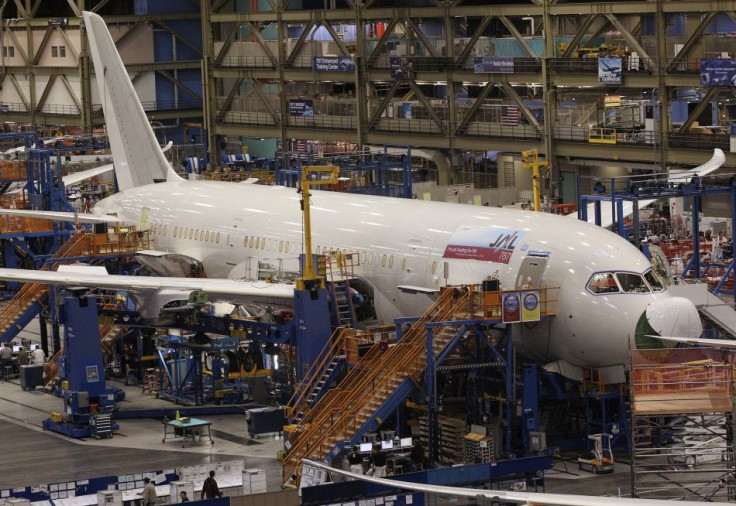Five Ideas to Create U.S. Jobs
OPINION

Talking about creating jobs these days is a little like what writer Mark Twain said about people talking about the weather: everyone talks about the weather, but no one ever seems to be able to do anything about it.
The stark truth of the matter is that unless the private sector starts hiring en masse (including non-profit organizations), absent a surge in exports, it will be up to the public sector to provide stimulus to create jobs.
Moreover, the public sector is more than capable of creating jobs.
For eample, U.S. government spending for the mobilization during World War II lowered the U.S. unemployment to a minuscule 1.2% in 1944!
If you need another example of how a large increase in government spending can increase GDP growth see China and Europe. At the outbreak of the latest recession, China increased governement spending in a big way -- with a large stimulus package. How's China's GDP growth now? Conversely, Europe's Eurozone, after a brief period of stimulus, has implemented austerity measures, some of which were warranted. How is Europe's economy doing now?
At Issue: How to Create More Jobs
In other words, one thing U.S policy makers should not do in 2012 is cut government spending in a big way, short-term: that almost certainly will slow U.S. GDP growth more, if not tip the world's largest economy back into a recession. Delay the big cuts until 2013, as the automatic cuts dictated by the super committee's inability to reach an agreement call for -- don't do anything that would have those cuts occur sooner.
But the above describes what to avoid. What can the nation do to create jobs?
Well, taking another page out of economist John Maynard Keynes' play-book, the U.S. government can deploy a series of public works projects to -- you guessed it -- increasing demand and create jobs.
Moreover, there's no shortage of work that needs to be done and literally millions of Americans available and willing to undertake the work.
Here are a few ideas:
1 Infrastructure Rebuilding - Highways, Roads, Bridges. The nation's infrastructure is in a state of disrepair. The U.S. will probably experience more highway bridge collapses like the one that occurred in Minneapolis in 2007, which killed 13 people and injured 145. The nation must rebuild and expand its infrastructure to meet the commerce demands of the 21st Century. Cost: $500-750 billion.
2 Increases in Funding to Secondary Schools, Community Colleges - Congress could establish a special federal education fund to both decrease class size and increase the capacity of community colleges -- the latter of which could serve as a critical re-training resource for the tens of millions of Americans who will need to be re-trained to obtain the skills required for the technology-based 21stcentury U.S. economy. Cost: $200-250 billion.
3 Smart Grid/Electric Grid/Internet - Speaking of technology, if Congress deploys federal funds to build a smart the nation will become more energy-efficient. Further, the electric grid needs to be expanded as well, given the fact that a simple heat wave in the summer tends to strain the grid. And expanding broadband access to universal status can only make the economy more efficient and increase job opportunities to those who presently lack it. Cost: $150-250 billion.
4 Airports/Rails/Public Transportation - Anyone who's flown in the U.S recently knows that most of our airports are at/near capacity and/or are antiquated. Simply, the U.S. needs to build more airports and expand/modernize others. The same for the nation's rail system. Further, increased funding for light rail and for natural gas/alternative fuel buses will reduce the nation's imported oil bill and highway congestion. Cost: $200-350 billion.
5 Next-Generation Car - The United States could expand its public/private partnership to speed the introduction of that game-changing, next-generation car, be it electric-, fuel cell-, or natural gas-based. The federal government could concentrate on the costly basic research that companies can't afford, and the auto makers could concentrate on design and features. Cost: $50-80 billion.
To be sure, the above investments are not cheap. They'd cost $1.1 trillion-1.68 trillion, but even if only one or two are deployed, that would still increase both U.S. GDP growth and job growth.
Again, it's great when the primary engine of job growth, corporations -- both large and small -- are deploying capital and creating jobs. But they have not done so en masse during the current recovery: they've basically sat on $2 trillion in cash.
Further, the answer is not tax cuts on businesses to increase capital: corporations and the U.S. financial system are awash in capital.
The problem is not capital or product supply: it's demand. Hence, policy makers need to take action -- public or private -- to increase demand, and get this economy moving again, to create the millions of jobs the American people seek.
- -
© Copyright IBTimes 2025. All rights reserved.





















